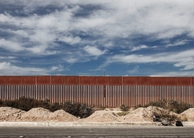The term ‘drivers of crime’ was clearly defined by an unnamed Ministry of Justice official in a December 2009 policy paper as "the underlying causes of offending and victimisation". However, that paper itself conflated causation and correlation, by also referring to circumstances merely “associated with” offending (MOJ, 2009a, pp. 2-3). Despite the apparent clarity of definition, the transformative process by which correlation was seemingly replaced with a causative explanation remained uncertain.
A 2010 Cabinet paper referred to the ‘priority areas’ as “risk factors” having a "demonstrated link to" or "direct influence on" crime (Cabinet, 2010, pp. 1, 2), indicating correlation, and consistent with the literature noted above. However, the paper also introduced "initiatives [that] address the drivers of crime" as “working on the causes of crime" (Cabinet, 2010, pp. 1, 2, emphasis added). Likewise in the context of performance measures. Two of the (then) four priority areas (low-level offending, and alcohol and drugs) were referred to as only influencing or contributing to crime. However, the remaining factors (youth conduct and behaviour, and maternity and early parenting) were more assertively claimed as drivers of crime (Cabinet, 2010, p. 2), a distinction apparently reinforcing causal meaning ascribed to the term 'drivers'. A later report co-presented by the Ministers of Justice and Police also characterised the 'drivers of crime' and related programs as "[addressing] the causes of offending" (MOJ, 2011, p. 15, emphasis added).
It was in this inconsistent context that the 'strategic change portfolio' known as
Policing Excellence was mentioned at Cabinet, with stated aims "to prevent crime, provide better outcomes for victims,.. and reduce the growth rate of the criminal justice system" (Cabinet, 2010, p. 3). NZ Police quickly took up the challenge, reflecting a government "commitment to a police force that is well-trained, well-resourced and has the legislative authority to tackle the key drivers of crime" (NZ Police, 2009b, p. 4). A comprehensive
Policing Excellence change program commenced in late 2010 was joined a year later by a complementary
Prevention First operating strategy (NZ Police, 2012a, 2013a), both supplemented the following year with a series of crime rate reduction targets set under the government's
Better Public Services program (Cabinet, 2012a).
Notwithstanding the Minister of Justice publicly describing “the drivers of crime strategy” as addressing “the underlying causes of crime” (Power, 2011), there remained some inconsistency how Police expressed the (now) five factors' connections with crime, ie whether by causation or correlation. Alcohol, for example, was noted only as "a factor in most incidents", and the 'drivers of crime' were sometimes referred to simply as "drivers of demand on the criminal justice system" (NZ Police, 2011, pp. 8, 16, emphasis added). NZ Police's 2012 Statement of Intent described the Addressing the Drivers of Crime program as targeting "social factors that contribute to offending" (NZ Police, 2012b, p. 15, note 5, emphasis added). Police failed to mention the program in its 2013 Statement of Intent, referring only to police involvement with an "all-of-government response to organised crime, Youth Crime Action Plan, Children's Action Plan, social sector trials and other Police initiatives". Several of these initiatives, however, were described as "addressing the causes of crime" (NZ Police, 2013b, pp. 13, 15).
Notwithstanding such inconsistencies, the five drivers’ transformation from correlation to causation appeared complete by 2014. The Police Statement of Intent that year described crime prevention activities "targeting its action to the drivers of crime: youth, alcohol, organised crime, dysfunctional families, and high-risk driving behaviours", described as "the underlying causes of offending and victimisation" (NZ Police, 2014c, pp. 19, 34). Similar statements in a series of high-level documents (including the 2014 Statement of Intent, 2014 Annual Report, and 2015 Four Year Plan 2015-2019) reinforced the purported causal connection initially defined in the Ministry of Justice policy paper noted above (MOJ, 2009a).
The 'drivers of crime' phraseology is confused. That is part of the problem. By at least 2014, however, its enumerated factors were repeatedly portrayed as representing the underlying causes of offending. The following section constructively critiques the causal connection asserted by The 5 Drivers of Crime.
This article does not suggest that the constituent elements of The 5 Drivers of Crime are not relevant, significant and meaningful in understanding the criminal environment. They are (Brown, Esbensen, & Geis, 2010; Hagan, 2011). Nor does it contend that well-implemented policies and activities based on those factors cannot generate positive crime prevention results, or that none of the factors have any causal effect. One such possibility is illustrated below. This section simply contends that The 5 Drivers of Crime as currently expressed does not reflect the underlying causes of offending as it purports, nor does it present a unified theory of criminal causation as its title alluringly suggests.
Enumerating issues relevant to his generation, many of which still resonate today (as evident by 'the 5 drivers of crime' itself), Cantor illustrated the critical importance of distinguishing between correlation and causation:
At different times, different authors have alleged that the basis of crime is to be found in truancy, family background, juvenile delinquency, bad schooling, congestion, broken homes, gangs, the neighborhood, unwise use of leisure time, lack of recreational facilities, feeblemindedness, inefficiency in the administration of criminal justice, economic factors, fire-arms, the inefficiency of prohibition law enforcement, inefficient probation, parole and penal systems. It is conceivable that all or any or several of these factors may dominate or be of significance in shaping the lives of the offenders. It is conceivable, but just how such elements do enter, how the factors are associated has never been satisfactorily demonstrated (1933, p. 1029).
By way of illustration, selecting one of the nominated 'drivers of crime', youth offenders are disproportionately represented in crime statistics (St Thomas of Canterbury College, 2015). ‘Youth’ is a well-recognised risk factor, and young adults are more likely to be involved in criminal offending than other age groups. However, being 18 years old is neither causative nor indicative of criminality. Many young people commit crime. A great many others do not. Policymakers may designate youth offending a priority area for policy development, as New Zealand did in 1992/1993 and 2009/2010, and well-implemented policies may have a positive crime prevention impact. The research conducted for New Zealand’s earlier national crime prevention initiative also indicated that predictive ‘risk factors’ such as age, gender and dysfunctional family relationships contribute to the likelihood of offending, at least in the presence of social, economic and environmental ‘triggers’, but “these factors are not causes of crime” (Crime Prevention Action Group, 1992, pp. 4, 29, emphasis in original).
Illicit drugs offer a more nuanced example from the 'drivers of crime' list. A drug addict described as "a desperate man in need of help" may commit a string of burglaries to pay for his next purchase (eg Hutt News, 2015), suggesting a causative glimmer of truth in The 5 Drivers of Crime. But what does it tell us about higher order criminality? What about the dealer who supplied the drugs? The organised crime group ‘cook’ who manufactured them? The trafficker who imported the ingredients? Or local and overseas representatives of the cartels responsible for exporting vast quantities of illicit drugs? Although listed as a ‘driver of crime’, ‘drugs’ likely has little bearing on the underlying causes of serious offending committed by drug dealers, drug traffickers, and the organised crime groups associated with its trade. Illicit drugs is the product they choose to manufacture, distribute and sell. It is not what causes them to do so. Thus, even when aspects of constituent elements of The 5 Drivers of Crime carry some causal resonance, such as theft and burglary to support drug use, the seemingly self-contained ‘drivers of crime' construct remains largely silent in explaining the underlying causes of a range of higher-order serious criminal activities that create significant economic and social harm.
Moreover, although 'drugs' is presented as an underlying cause of offending, in practice NZ Police has long recognised a more nuanced bifurcated reality. Even before The 5 Drivers of Crime was introduced into operational policing, the Police Commissioner distinguished between "burglaries committed by drug users [and] drug dealing carried out by organised criminal groups" (NZ Police, 2009a, p. 2). After a recent $800,000 methamphetamine seizure, Detective Sergeant McNeill also succinctly differentiated crime caused by drug users themselves ("the ripple effect it causes, the burglaries, the car theft, aggravated robbery") from likely causal factors motivating the offending of drug suppliers: "we don't believe the alleged offenders here are actual users of the drug, this is purely a financial transaction" (Stuff, 2015).
Police appear also to have added 'organised crime' (and 'road policing', and sometimes 'gangs') to four priority areas arrived at by a ‘drivers of crime’ committee process sanctioned by Ministers, but much like the fact of being a youth, the existence of an organised crime group is of itself not a ‘driver’ of crime in a causative sense. It may be said that organised crime groups are responsible for much serious crime. Of course they are. It is what they do. By definition. The suggestion that organised criminal groups cause crime is, however, so irredeemably tautological as to be useless in a criminological context. Identifying a section of society likely to commit crime gets us no closer to understanding "the underlying causes of offending" apparently intended by the term 'drivers of crime'.
A final hypothetical example that traverses all five segments of the ‘drivers of crime’ quintet illustrates the causality deficit of the definition ascribed to The 5 Drivers of Crime. Whether youth members of an organised crime group responsible for distributing illicit drugs have dysfunctional family backgrounds, consume drugs and alcohol irresponsibly, and drive much too fast, is unlikely to have much bearing on the underlying causes of their offending.
These examples suggest that The 5 Drivers of Crime also misses important elements that may arguably be described as causative, one of which is discussed in the following section.
Money is often described as a key motivator of “rational, calculating crimes” (Coleman, 1992) spanning a broad expanse of serious offending such as trafficking in arms, drugs and people, corruption, fraud and extortion (Brown et al., 2010; Hagan, 2011). Money laundering is also an “inevitable accessory” (Fréchette, 2000) to all large-scale acquisitive offending, “through which to preserve illicitly gained funds while at the same time incentivising the overall profitability of crime” (Gilmour & Ridley, 2015, p. 293).
Money as “the foremost reason” (Stankiewicz, 2015) for engaging in unlawful activity may be drawn from across the spectrum of criminological discourse. For example:
…the commission of crime rests fundamentally upon the economic foundations of [Western European culture]. The nature of the crimes committed reflects this obvious fact. Grand larceny, burglary, robbery, forgery and the various crimes arising out of 'racketeering' are not perpetuated for the sport to be gotten but are committed in order to obtain money... Crime for profit is ... a function of our economic order (Cantor, 1933, pp. 1031-1032).
Studies on the impact of proceeds of crime enforcement also recognise that the nature of organised crime includes "profit [as] the primary motive of such businesses" (McFadden, O'Flaherty, Boreham, & Haynes, 2014, p. 4). Australasian policing guidelines refer to "underlying social and economic causes of crime" (Australian Institute of Criminology, 2012, p. 4, emphasis added), and a recent report on the cost of serious and organised crime records the “relentless pursuit of illicit profit” at the core of offending (ACC, 2015, p. 2). Material gain is fundamental to some of the world's most serious criminal activities, as reflected in the Palermo Convention definition of "organised criminal group":
... a structured group of three or more persons, existing for a period of time and acting in concert with the aim of committing one or more serious crimes or offences … in order to obtain, directly or indirectly, a financial or other material benefit (UN, 2000, p. 5, Article 2, emphasis added).
Similarly in New Zealand, "organised criminal group" includes "3 or more people who have as [an] objective ... obtaining material benefits from the commission of [serious] offences" ("Crimes Act," 1961, s98A(2)). Countless news reports reflect the experience of law enforcement agencies worldwide, such as Europol observing criminals switching between activities: "very lucrative" profits see "criminals who would normally deal with drugs,...[or] other forms of crime [use the] opportunity [to make] criminal profits out of the migrant crisis" (Ganley, 2015).
Money as a possible causal ‘driver’ of crime, and the harmful effects of profit-motivated offending, were also regarded "key messages” by at least one working group in the April 2009 Drivers of Crime Ministerial Meeting. Participants expressed a need for "a wider definition” of criminal drivers in the policymaking process to “include both violent crime as well as the crime that occurs more secretly (eg white-collar crime that is equally damaging to society and families)" (MOJ, 2009b, p. 43). As the indispensable companion of white-collar crime and many other serious offences, money laundering is arguably the world's apex profit-motivated crime. It supports, enables and perpetuates profit-motivated offending, and “sustains every criminal activity engaged in for profit, which is to say all crime but crimes of passion or vengeance" (Noble, 1993, p. 3). However, the profit motive central to some of the most serious offending "equally damaging to society" failed to appear in the 'priority areas' that ultimately became The 5 Drivers of Crime at the core of police focus on "the underlying causes of offending and victimisation.” In practice, however, this gap is not lost on NZ Police, as outlined in the following section. The subsequent section then suggests why it matters if there is a gap between what is said and done.Continued on Next Page »
ACC. (2015). The costs of serious and organised crime in Australia 2013-2014. Retrieved from Canberra, ACT, Australia: http://www.crimecommission.gov.au/publications/intelligence-products/costs-serious-and-organised-crime-australia-2013-14
Anon (2014, 11 March 2014). [Informal unstructured interview: Drivers of crime, gatekeeper involvement, police culture].
Anon (2015a, 26 August 2015). [Informal unstructured interview: Drivers of crime, ML & professionals, ML research].
Anon (2015b, 6 November 2015). [Informal unstructured telephone discussion: Drivers of crime not causative 'worst kept secret'].
Australian Institute of Criminology. (2012). National crime prevention framework. Retrieved from http://aic.gov.au/crime_community/crimeprevention/ncpf.html
Banks, C., Maloney, E., & Willcock, H. (1975). Public attitudes to crime and the penal system. The British Journal of Criminology, 15(3), 228-240. Retrieved from http://www.jstor.org/stable/23636156
Beard, M. (2007). Roman Triumph. Cambridge, MA, USA: Harvard University Press.
Brook, E. (2014). Spotlight on,... the Asset Recovery Unit. Police News, 47(2). Retrieved from http://www.policeassn.org.nz/newsroom/publications/featured-articles/spotlight-on%E2%80%A6-asset-recovery-unit
Brown, S. E., Esbensen, F.-A., & Geis, G. (2010). Criminology: Explaining crime and its context Retrieved from http://www.eblib.com Retrieved from http://www.eblib.com
Bush, M. (2013). Brakes go on drivers of crime. Ten One(365). Retrieved from http://tenone.police.govt.nz/tenone/January13National3.htm
Byrne, M. (2015). Queensland Organised Crime Commission of Inquiry. Retrieved from https://www.organisedcrimeinquiry.qld.gov.au/__data/assets/pdf_file/0017/935/QOCCI15287-ORGANISED-CRIME-INQUIRY_Final_Report.pdf
Cabinet. (2009). Cabinet Paper. Addressing the drivers of crime. Wellington, NZ: New Zealand Government Retrieved from http://www.justice.govt.nz/justice-sector/drivers-of-crime/publications-and-background-information/documents/Addressing%20the%20Drivers%20of%20Crime%20Cabinet%20paper.pdf.
Cabinet. (2010). Cabinet Paper. Addressing the drivers of crime: progress and opportunities. Wellington, NZ: New Zealand Government Retrieved from http://www.justice.govt.nz/justice-sector/drivers-of-crime/publications-and-background-information/documents/Dec%20Cab%20paper%20for%20website.pdf.
Cabinet. (2012a). Cabinet Paper. Better public services results: targets and public communication. Wellington, NZ: New Zealand Government Retrieved from http://www.ssc.govt.nz/sites/all/files/bps-cab-paper-results-targets-25june2012_0.pdf.
Cabinet. (2012b). Cabinet Paper. Drivers of Crime. Investment package for alcohol and other drug assessments and interventions - implementation plan. Wellington, NZ: New Zealand Government Retrieved from http://www.justice.govt.nz/publications/global-publications/d/drivers-of-crime-investment-package-for-alcohol-and-other-drug-assessments-and-interventions-2013-implementation-plan-cabinet-paper.
Cabinet. (2014). Cabinet Paper. Whole-of-government action plan to reduce the harms caused by New Zealand adult gangs and transnational crime groups. Wellington, NZ: New Zealand Government Retrieved from http://www.police.govt.nz/sites/default/files/publications/cabinet-paper-whole-of-govt-action-plan-to-reduce-harms-caused-by-adult-gangs-and-transnational-crime-groups.pdf.
Campbell, A., & Muncer, S. (1990). Causes of crime: Uncovering a lay model. Criminal Justice and Behavior, 17(4), 410-419. doi:10.1177/0093854890017004002
Cantor, N. (1933). The causes of crime. Journal of Criminal Law and Criminology (1931-1951), 23(6), 1029-1034. doi:10.2307/1136079
Civilian Secretariat for Police. (2015). Draft white paper on safety and security: notice for public comments. Government Gazette: Republic of South Africa Retrieved from http://www.gov.za/sites/www.gov.za/files/38526_gen178.pdf.
Clarke, R. V. (2004). Technology, criminology and crime science. European Journal on Criminal Policy and Research, 10(1), 55-63. doi:10.1023/B:CRIM.0000037557.42894.f7
Coleman, J. W. (1992). Crime and money motivation and opportunity in a monetarized economy. The American Behavioral Scientist, 35(6), 827-836. Retrieved from http://search.proquest.com.libraryproxy.griffith.edu.au/docview/194894102?accountid=14543
Crime Prevention Action Group. (1992). Strategy paper on crime prevention: Report on the the preliminary stage of analysis. Retrieved from Wellington, NZ:
Crime Prevention Action Group. (1993). Strategic management of government crime prevention activities: CPAG Phase II interim report. Retrieved from Wellington, NZ:
Crime Prevention Unit. (1993). The New Zealand Crime Prevention Strategy. Retrieved from Wellington, NZ:
Crimes Act, 1961 No 43 Stat. (1961 1 November 1961).
Cullen, F. T., Clark, G. A., Cullen, J. B., & Mathers, R. A. (1985). Attribution, salience, and attitudes toward criminal sanctioning. Criminal Justice and Behavior, 12(3), 305-331. doi:10.1177/0093854885012003003
Davidson, I., & McGill, G. (2013). Follow the money: tackling money laundering to reduce organised crime. Paper presented at the Policing organised crime: changing landscape, changing practice conference. http://www.police-foundation.org.uk/uploads/holding/annual_conference/follow_the_money.pdf
Dills, A. K., Miron, J. A., & Summers, G. (2008). What do economists know about crime? Retrieved from Cambridge, MA, USA: http://www.nber.org/papers/w13759
Durant, W. (1949). The story of philosophy: the lives and opinions of the greater philosophers (2 ed.). New York, USA: Simon and Schuster.
Evans, M. (2015a, July 2015). Guide to good practice. TenOne.
Evans, M. (2015b). Top POP Cops head to Christchurch for final. Retrieved from http://www.police.govt.nz/news/release/top-pop-cops-head-christchurch-final
FATF. (2012). FAQ: Money laundering. Retrieved from http://www.fatf-gafi.org/pages/faq/moneylaundering/
Fréchette, L. (2000). No country alone can cope with growth of transnational crime, says Deputy Secretary-General to Vienna Crime Congress [Press release]. Retrieved from http://www.un.org/press/en/2000/20000406.dsgsm92.doc.html
Ganley, E. (2015, 28 September 2015). Human trafficking in refugees: Smugglers rule camps in northern France. CDC News. Retrieved from http://www.cbc.ca/m/touch/world/story/1.3246532
Gilmour, N. (2014). Understanding money laundering - a crime script approach. The European Review of Organised Crime, 1(2), 35-56. Retrieved from http://sgocnet.org/site/wp-content/uploads/2014/06/Gilmour_3_35-56.pdf
Gilmour, N., & Ridley, N. (2015). Everyday vulnerabilities – money laundering through cash intensive businesses. Journal of Money Laundering Control, 18(3), 293-303. doi:10.1108/JMLC-06-2014-0019
Graham, J., & Bennett, T. (1995). Crime prevention srategies in Europe and North America Retrieved from
Hagan, F. E. (2007). Introduction Introduction to criminology: Theories, methods, and criminal behavior (6 ed.). UK: Sage Publications, inc.
Hagan, F. E. (2011). Introduction to criminology: Theories, methods and criminal behaviour (7 ed.): Sage Publications, Inc.
Home Office. (2015). Opportunity/security as a driver of crime: a discussion paper. Retrieved from https://www.gov.uk/government/uploads/system/uploads/attachment_data/file/398865/Opportunity_security_final_v2.pdf
Hutt News. (2015, 15 September 2015). Meth addict terrorises. Hutt News. Retrieved from http://huttnews.realviewdigital.com/?iid=127970&startpage=page0000034#folio=34
ICPC. (2014). Crime Prevention and community safety: Trends and perspectives. Retrieved from Montréal, Québec, Canada: http://www.crime-prevention-intl.org/en/publications/report/report/article/4th-international-report-on-crime-prevention-and-community-safety.html
Laycock, G. (2005). Defining crime science. In M. J. Smith & N. Tilley (Eds.), Crime science: New approaches to preventing and detecting crime (pp. 3-24). Cullompton, Devon, UK: Willan Publishing.
Lewis, C. S. (1942). The screwtape letters. UK: Geoffrey Bles.
McFadden, M., O'Flaherty, M., Boreham, P., & Haynes, M. (2014). Targeting the profits of illicit drug trafficking through proceeds of crime action. Retrieved from Canberra, Australia: http://ndlerf.gov.au/publications/monographs/monograph-52
MOJ. (2009a). Addressing the drivers of crime: background information. Retrieved from Wellington, NZ: http://www.justice.govt.nz/justice-sector/drivers-of-crime/publications-and-background-information/documents/Addressing%20the%20Drivers%20of%20Crime%20background%20paper%20-2.pdf
MOJ. (2009b). Drivers of Crime Ministerial Meeting: Full proceedings. Retrieved from Wellington, NZ: http://www.justice.govt.nz/justice-sector/drivers-of-crime/publications-and-background-information/documents/drivers-of-crime-ministerial-meeting-proceedings
MOJ. (2009c). Risk factors and causal mechanisms for offending. Retrieved from Wellington, NZ: http://www.justice.govt.nz/justice-sector/drivers-of-crime/publications-and-background-information/documents/spb-risk-factors-and-causal-mechanisms
MOJ. (2011). Strengthening New Zealand's resistance to organised crime: An all-of-government response. Retrieved from Wellington, NZ: http://www.justice.govt.nz/publications/global-publications/s/strengthening-new-zealands-resistance-to-organised-crime
Murray, K. (2011). The uses of irresistible inference: Protecting the system from criminal penetration through more effective prosecution of money laundering offences. Journal of Money Laundering Control, 14(1), 7-15. doi:10.1108/13685201111098842
Newburn, T. (2007). Criminology. Cullompton, Devon, UK: Willan Publishing.
Nippert, M. (2013, 12 February 2012). Economic crime costs NZ billions each year. Stuff. Retrieved from http://www.stuff.co.nz/business/industries/8291073/Economic-crime-costs-NZ-billions-each-year
Federal Government's response to money laundering: Hearings before the Committee on Banking, Finance & Urban Affairs (Statement of Ronald K Noble, Assistant Secretary for Enforcement, US Department of the Treasury), 103d Congress, 1st Sess 200-01 Sess (1993).
NZ Police. (2009a). Illicit drug strategy to 2010. Retrieved from Wellington, NZ: https://www.police.govt.nz/resources/2009/NZ_Police_Illicit_Drug_Strategy_2009.pdf
NZ Police. (2009b). Statement of Intent 2009/10 - 2011/12. Retrieved from Wellington, NZ: http://www.police.govt.nz/sites/default/files/publications/statement-of-intent-2009-10-2011-12.pdf
NZ Police. (2010). Organised crime in New Zealand. Retrieved from Wellington, NZ: http://www.ofcanz.govt.nz/sites/default/files/Organised-Crime-in-NZ-2010-Public-Version.pdf
NZ Police. (2011). Annual Report 2010/11. Retrieved from Wellington, NZ: http://www.police.govt.nz/sites/default/files/publications/annual-report-2011.pdf
NZ Police. (2012a). Prevention first: National operating strategy 2011-2015. Retrieved from Wellington, NZ: http://www.police.govt.nz/sites/default/files/publications/prevention-first-strategy-2011-2015.pdf
NZ Police. (2012b). Statement of Intent 2012-2014. Retrieved from Wellington, NZ: http://www.police.govt.nz/sites/default/files/publications/statement-of-intent-2012-13-2014-15.pdf
NZ Police. (2013a). Policing excellence programme charter. Retrieved from Wellington, NZ:
NZ Police. (2013b). Statement of Intent 2013/2014 - 2015/2016. Retrieved from Wellington, NZ: http://www.police.govt.nz/sites/default/files/publications/statement-of-intent-2013-14-2015-16.pdf
NZ Police. (2014a). Annual Report 2013/2014. Retrieved from Wellington, NZ: http://www.police.govt.nz/sites/default/files/publications/annual-report-2014.pdf
NZ Police. (2014b). Policing Excellence: the transformation of New Zealand Police 2009-2014. Retrieved from Wellington, NZ: http://www.police.govt.nz/sites/default/files/publications/policing-excellence-closure.pdf
NZ Police. (2014c). Statement of Intent 2014/15 - 2017/18. Retrieved from New Zealand Police: http://www.police.govt.nz/sites/default/files/publications/2014-statement-of-intent.pdf
NZ Police. (2015). Four year plan 2015/16 - 2018/19. Retrieved from Wellington, NZ: http://www.police.govt.nz/sites/default/files/publications/strategic-plan-2015-08-06-four-year-plan.pdf
O'Neill, R. (1993). Crime prevention strategies: the New Zealand model. Social Policy Journal of New Zealand, 1(1). Retrieved from http://www.msd.govt.nz/about-msd-and-our-work/publications-resources/journals-and-magazines/social-policy-journal/spj01/01-crime-prevention.html
Paoli, L., & Greenfield, V. A. (2015). Starting from the end: A plea for focusing on the consequences of crime. European Journal of Crime, Criminal Law and Criminal Justice, 23(2), 87-100. doi:doi:10.1163/15718174-23022062
Pawson, R. (2002). Evidence-based policy: The promise of `realist synthesis'. Evaluation, 8(3), 340-358. doi:10.1177/135638902401462448
Power, S. (2009). Drivers of crime ministerial meeting: opening remarks. Paper presented at the Drivers of crime ministerial meeting, Wellington, NZ. http://www.justice.govt.nz/justice-sector/drivers-of-crime/drivers-of-crime-ministerial-meeting/speeches/opening-remarks
Power, S. (2011). Speech to Institute of Policy Studies 'Costs of crime' forum. Paper presented at the Costs of crime, Wellington, NZ. http://www.rethinking.org.nz/assets/Cost%20of%20Crime/Hon%20Simon%20Power%20Speech%20Costs%20of%20Crime%202011.pdf
R v Zhang & Ors, No. CRI-2013-092-11602, [2015] NZHC 2325 (High Court of New Zealand, Auckland 2015).
Reuterman, N. A. (1978). The public's views of delinquency causation: A consideration in comprehensive juvenile justice planning. Juvenile and Family Court Journal, 29(3), 39-45. doi:10.1111/j.1755-6988.1978.tb01155.x
Reuterman, N. A., & Cartwright, D. S. (1976). Practitioners' views of delinquency causation: A consideration in comprehensive juvenile justice planning. Criminal Justice and Behavior, 3(1), 67-84. doi:10.1177/009385487600300106
Roper, T., & Thompson, A. (2006). Estimating the costs of crime in New Zealand in 2003/04. Retrieved from http://www.treasury.govt.nz/publications/research-policy/wp/2006/06-04/twp06-04.pdf
Rose, J. (2014). Economic crime costs up to $9.4bn. Radio NZ. Retrieved from http://www.radionz.co.nz/news/national/257185/economic-crime-costs-up-to-$9-point-4bn
Serious Fraud Office. (2012). Cost of economic crime report: An estimate by the serious Fraud Office of the total scale of fraud in New Zealand [Draft, redacted version]. Retrieved from Auckland, NZ: https://s3.amazonaws.com/s3.documentcloud.org/documents/1336568/img-x14110421-0001.pdf
Sherman, L. W. (1998). Evidence-based policing. Ideas in American Policing(July 1998), 1-15. Retrieved from http://www.policefoundation.org/wp-content/uploads/2015/06/Sherman-1998-Evidence-Based-Policing.pdf
Sherman, L. W., Farrington, D. P., Welsh, B. C., & MacKenzie, D. L. (2002). Evidence-based crime prevention. London, UK; New York, USA: Routledge.
Søreide, T. (2014). Drivers of corruption: A brief review International Bank for Reconstruction and Development / The World Bank.
SSC, Treasury, & DPMC. (2014). Performance improvement framework: Follow-up review of New Zealand Police. Wellington, NZ: New Zealand Government Retrieved from http://www.police.govt.nz/sites/default/files/publications/performance-improvement-framework-follow-up.pdf.
St Thomas of Canterbury College. (2015). Edmund Rice Youth Custody Index 2015. Retrieved from Christchurch, NZ: http://www.erjustice.org.nz/wp-content/uploads/2010/10/YCI-2015.pdf
Stankiewicz, N. (2015). Using anti-money laundering measures in the financial world to combat organized crime. Student Pulse, 7(10). http://www.inquiriesjournal.com/a?id=1268 Retrieved from http://www.inquiriesjournal.com/a?id=1268
Stuff. (2015, 15 September 2015). Louis Vuitton handbag seized in $800,000 meth bust. Stuff. Retrieved from http://www.stuff.co.nz/auckland/local-news/72088681/louis-vuitton-handbag-seized-in-800000-meth-bust
United Nations convention against transnational organized crime, (2000).
UN ECOSOC. (2002). Guidelines for the prevention of crime (Vol. ECOSOC Resolution 2002/13 (Action to promote effective crime prevention), Annex). New York: United Nations Economic and Social Council (ECOSOC).
UNODC. (2011). Estimating illicit financial flows resulting from drug trafficking and other transnational organized crimes. Retrieved from https://www.unodc.org/documents/data-and-analysis/Studies/Illicit_financial_flows_2011_web.pdf
Endnotes
1.) Cabinet is the central policy and decision-making body of the executive branch of New Zealand's government, comprising the Prime Minister and other senior ministers.
2.) The author has not seen evidence that any of the enumerated signposts, other than the first, were actually uncovered in the Addressing the Drivers of Crime policy process from which The 5 Drivers of Crime resulted. Although readily accessible from a cursory glance at the scientific evidence base and the government’s own records, it is plausible that in 2009/2010 policymakers and Police were not aware of the latter three, in which case they are listed here with the usual benefits of hindsight.
3.) Although it may not have been available to them, participants’ comments echoed the earlier national crime prevention initiative noted above. Addressing white-collar crime - costing “billions of dollars” each year (Crime Prevention Action Group, 1992, pp. 28, 74) and carrying societal impact “considerably greater than the cost of robbery, theft and burglary combined” (Crime Prevention Unit, 1993, p. 11) - had been listed as one of seven crime prevention policy goals (Crime Prevention Action Group, 1992, 1993).
4.) The data are scant, and assumptions heroic, and without access to the underlying data these estimates are intended merely illustrative.
5.) This is consistent with earlier research indicating that “the value and impact of white-collar crime,” costing “billions of dollars” each year, “is considerably greater than the cost of robbery, theft and burglary combined” (Crime Prevention Action Group, 1992, pp. 27, 28, 74; Crime Prevention Unit, 1993, p. 11).



















